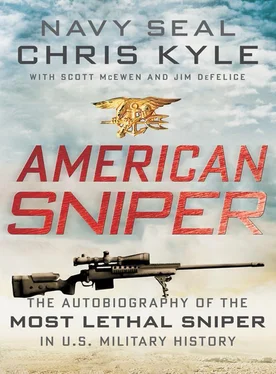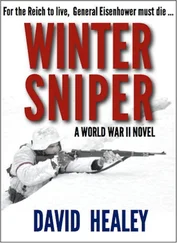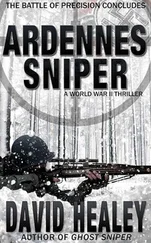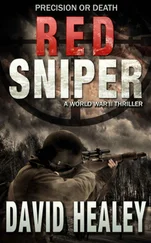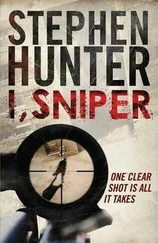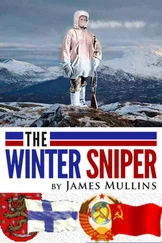I scrambled to get ready. Our RHIB (rigid hulled inflatable boat, used for a variety of SEAL tasks) looked like a cross between a rubber life raft and an open speedboat with two monster motors in the back. Thirty-six feet long, it held eight SEALs and hit upward of forty-five knots on a calm sea.
The exhaust from the twin motors wafted over the boat, mixing with the spray as we gathered speed. We were hauling at a good pace, riding the wake of the tanker where radar couldn’t pick us up. I went to work, taking a long pole from the deck of the boat. Our speed dropped as our RHIB cut alongside the tanker, until we were just about matching its pace. The Iranian ship’s engines pulsed in the water, so loud our own motors were drowned out.
As we pushed alongside the tanker, I extended the pole upward, trying to angle the grappling hook at the top onto the ship’s rail. Once the hook caught, I jerked the pole down.
Gotcha.
A bungee cord connected the hook to the pole. A steel cable ladder was connected to the hook. Someone grabbed hold of the bottom and held it while the lead man began climbing up the side of the ship.
A loaded oil tanker can sit fairly low in the water, so low, in fact, that you sometimes can just grab the rail and hop over. That wasn’t the case here—the railing was quite a bit higher than our little boat. I’m not a fan of heights, but as long as I didn’t think too much about what I was doing, I was fine.
The ladder rocked with the ship and the wind; I pulled myself upward as quickly as I could go, my muscles remembering all those pull-ups in BUD/S. By the time I reached the deck, the lead guys were already headed toward the wheelhouse and bridge of the ship. I ran to catch up.
Suddenly the tanker began gaining speed. The captain, belatedly realizing he was being boarded, was trying to head for Iranian waters. If he reached them, we’d have to jump off—our orders strictly forbade taking any ship outside of international waters.
I caught up to the head of the team just as they reached the door to the bridge. One of the crew got there at roughly the same time, and tried to lock it. He wasn’t fast enough, or strong enough—one of the boarding party threw himself against the door and bashed it open.
I ran through, gun ready.
We’d done dozens of these operations over the past few days, and rarely had anyone even hinted of resistance. But the captain of this ship had some fight in him, and even though he was unarmed, he wasn’t ready to surrender.
He made a run at me.
Pretty stupid. First of all, I’m not only bigger than him, but I was wearing full body armor. Not to mention the fact that I had a submachine gun in my hand.
I took the muzzle of my gun and struck the idiot in his chest. He went right down.
Somehow, I managed to slip as well. My elbow flew out and landed straight on his face.
A couple of times.
That pretty much took the fight out of him. I rolled him over and cuffed him.
Boarding and searching ships—officially known as VBSS, for Visit, Board, Search, Seize—is a standard SEAL mission. While the “regular” Navy has specially trained sailors to handle the job in peacetime, we’re trained to handle the searches in places where resistance is likely. And in the lead-up to war during the winter of 2002–03, that meant the Persian Gulf off Iraq. The U.N. later estimated that, in violation of international sanctions, billions of dollars of oil and other items were smuggled out of Iraq and into the pockets of Saddam’s regime.
Smuggling took all sorts of forms. You’d find oil being carried in wheat carriers, hidden in barrels. More commonly, tankers took on thousands and thousands of gallons in excess of what they were permitted in the U.N. Oil-for-Food program.
It wasn’t just oil. One of the biggest contraband shipments we came across that winter were dates. Apparently they could fetch a decent price on the world market.
It was during those first months of my first deployment that I became acquainted with the Polish Wojskowa Formacja Specjalna GROM im. Cichociemnych Spadochroniarzy Armii Krajowej —Special Military Formation GROM of the Dark and Silent Parachutists of the Polish Army—better known as GROM. They’re the Polish version of the Special Forces, with an excellent reputation in special operations, and they worked on the takedowns with us.
Generally, we worked off a big ship, which we used as kind of a floating home port for our RHIBs. Half of the platoon would go out for one twenty-four-hour period. We would sail to a designated spot and drift in the night, waiting. With luck, a helo or a ship would radio intel about a ship coming out of Iraq sailing pretty low in the water. Anything that had a cargo would be boarded and inspected. We’d go out and take it down.
A few times we worked with an Mk-V boat. The Mk-V is a special operations craft that some people have compared to World War II–era PT boats. The craft looks like an armored speedboat, and its job is to get SEALs into harm’s way as quickly as possible. Built out of aluminum, it can haul serious ass—the boats are said to hit sixty-five knots. But what we liked about them were their flat decks behind the superstructure. Ordinarily, we would load two Zodiacs back there. But since the Zodiacs weren’t needed, the whole company would board from the RHIBs and stretch out to grab some sleep until ships were spotted. That beat leaning across the seat or twisting yourself around to rest on the gunwale.
Taking down ships in the Gulf quickly became routine. We could take dozens in a night. But our biggest takedown didn’t come off Iraq; it was some fifteen hundred miles away, off the coast of Africa.
In late fall, a SEAL platoon in the Philippines snuck alongside a freighter. From that point on, the North Korean ship was literally a marked vessel.
The 3,500-ton freighter had an interesting history of transporting items to and from North Korea. According to one rumor, she had transported chemicals that could be used to create nerve weapons. In this case, though, the ship’s papers declared that she was carrying cement.
What she was really carrying were Scud missiles.
The ship was tracked around the Horn of Africa while the Bush administration decided what to do about it. Finally, the President ordered that the ship be boarded and searched: just the sort of job SEALs excel at.
We had a platoon in Djibouti, which was a hell of a lot closer to the craft than we were. But because of the way the chain of command and assignments worked—the unit happened to be working for the Marines while we were directly under a Navy command—we were tasked to take down the freighter.
You can imagine how happy our sister platoon was to see us when we landed in Djibouti. Not only had we “stolen” a mission they considered theirs, they had to suffer the indignity of helping us offload and get ready for action.
As soon as I got off the plane, I spotted a buddy.
“Hey!” I shouted.
“Fuck off,” he answered.
“What’s up?”
“Fuck you.”
That was the extent of his welcome. I couldn’t blame him; in his place, I’d have been pissed myself. He and the others eventually came around—they weren’t mad at us; they were mad at the situation. Grudgingly, they helped us prepare for the mission, then got us aboard a mail-and-resupply helicopter from the USS Nassau, an amphibious assault ship out in the Indian Ocean.
Amphibs, as they’re called, are large assault ships that carry troops and helicopters, and occasionally Marine Harrier attack aircraft. They look like old-fashioned aircraft carriers with a straight-through flight deck. They’re fairly large, and have command and control facilities that can be used as forward planning and command posts during assault operations.
Читать дальше
